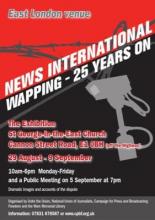Unit 13: Going Global - International Organisation, 1872-1922
This Unit aims to
- Review the attempts to organise a revolutionary international in the late 19th and early 20th Centuries
- Briefly examine the reformist internationals
- Examine the reasons behind the rejection by anarcho-syndicalists of the Bolsheviks ‘Red International’
- Look at the founding of the IWA
Terms and abbreviations
SPD: Sozialdemokratische Partei Deutschlands. German Social Democratic Party
ISNTUC: International Secretariat of National Trade Union Centres, the reformist trade union international
NAS: Nationaal Arbeids-Secretariaat, Dutch syndicalist organisation
ISEL: Industrial Syndicalist Education League
IWW: Industrial Workers of the World
